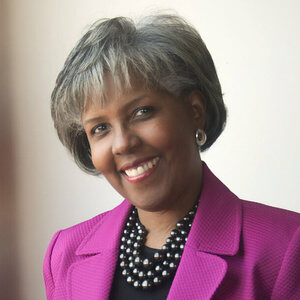Ask Alto: What are the top diversity, equity and inclusion learning topics that leaders need to include in their training to create a more inclusive culture?

At AltoPartners we’ve been running a series of guides to diversity and inclusion in the workplace, and as the number of articles has mounted up, we’ve noticed some recurring themes.
One of those themes is the need for education and training. Time and time again, mentorship, coaching and awareness programmes are recommended as being critical to making workplaces inclusive and welcoming. And again and again, experts recommend that training in this area does not just consist of organising a workshop for a group of employees: leaders and employees alike are urged to work on themselves too.
We’ve extracted the essential topics that should be on every company’s training list, and the personal work that people should think about doing.
Start with cultural competence
A key aspect of diversity looks obvious – even though it is not simple. Managers and employees at all levels need to work with people from other cultures. A culturally competent manager and a culturally competent company benefit from creating a psychologically safe workspace, in which people from all backgrounds feel comfortable being their authentic selves and aren’t afraid to raise concerns.
Cultural competency training works on the level of knowledge, attitudes, and skills, and looks at actions (for instance educating themselves about other cultures, or learning active listening techniques) that employees and managers can do to improve their understanding of cultural competence and how it applies in everyday interactions.
AltoPartners Guide to Diversity, Equity and Inclusion: Cultural competence and diversity initiatives
Work on awareness
The pragmatism of cultural competence training is a good place to start. But workplaces that want to be truly inclusive need to go deeper, and that means taking a long hard look at their workplace culture – and who or what it is that dominates that culture.
Countries and regions may have a dominant culture, as might cities or communities. Businesses have them too – and the effects of colonisation, industrialisation, and the global economy have reinforced the dominance of certain cultural norms and values (specifically of U.S./European, white, male, cisgender, heteronormative, English-speaking groups).
What that means is that any given workplace needs to understand its dominant culture – and how that impacts people from marginalised communities: a start-up composed of young people might be unconsciously marginalising older workers, for instance. The problem is that these kinds of exclusionary behaviours are almost always unconscious: people mean well but can’t see what they are doing. Maureen Alphonse-Charles, Senior Vice President of Talent, Diversity and Equity, Diversified Search Group / Koya Partners, a member of AltoPartners, says: “There needs to be an understanding that everyone has bias and that it comes in a series of forms – it can be issues of race, class, geography, age, learning style, pedigree… the list goes on and on.”
She recommends taking steps to find out what one’s own biases are – and then: “Go towards your biases rather than running away from them. So if your bias is against a particular racial group, try to get to know a person from that group so that you are no longer looking at a homogenous group, but rather working to understand areas of commonality.”
In the case of workplaces where white Western culture is the dominant one, experts recommend that companies start by ensuring that line managers are trained to understand how advantage and disadvantage play out. It’s valuable to carry out a forensic analysis of recruitment and selection, gathering data about who is – and who is not – being appointed to what positions, how long Black staff stay in the organisation compared with white staff, how pay is broken down by ethnicity, and employee satisfaction levels. That same kind of forensic analysis can apply to any way in which a company might be skewing towards a dominant culture.
Take action
Once the deeper patterns are understood, leaders can start to work on identifying and putting in place training around the following concepts and interventions:
Microaggressions: Managers need to educate themselves on the different types of microaggressions and could also consider workplace-wide anti-bias training.
Allyship: Employees often lack awareness of their privileged experiences and the steps they might take to alter them. Workers unfamiliar with the mechanisms of privilege and systematic racism have a harder time listening to others, so including allyship in workplace training is important.
AltoPartners Guide to Diversity, Equity and Inclusion: Encouraging allyship in the workplace
Bystander intervention: Ensure employees know how to recognise inappropriate behaviour, and how to report it. That includes ensuring that people can recognise instances of discrimination, bullying and sexual harassment and that they understand how to intervene effectively. Managers need to know to respond to a complaint, including dealing with whistle-blowers and how to protect the victim and bystander (whether anonymous or not).
Ask Alto: What is bystander intervention, how best to do it – and how to make sure it happens?
Specific areas that might need awareness programmes
A leadership team and company that have done the work outlined above will, in all probability, have uncovered the specific flashpoints in their organisation. These more specific DE&I issues can then be tackled as needed.
People’s names and pronouns: Awareness campaigns around the importance of acknowledging people’s names and pronouns can go a long way to smoothing relations between people.
LGBTQIA+ issues: Training should provide an opportunity to review policies and discuss potential changes, and look at gender sensitivities and appropriate behaviour within the workplace celebrating cultural and sexual differences.
Gender issues: Here, leadership is looking at training on gender identification differences, what discriminatory behaviour looks like and what policies the company has that address this behaviour.
Religion: Training can help employees to understand what is acceptable and not in terms of discussing faith in the workplace. Part of this can include looking at the issue of unconscious bias, as it is possible employees may try to impose their belief systems on others without realising it.
Neurodiversity: An organisation might benefit from running culture training for employees to combat micro-aggressions against neurodiverse employees.
Ageism: Consider a dedicated upskilling programme to allow older employees to keep pace with technology. Age diversity is about ensuring that older workers are included in decision-making processes and that younger employees are given opportunities to learn from them. Mentoring and reverse mentoring contribute to business continuity and maintain institutional memory.
Tattoos: Managers and supervisors must be trained to be sensitive to the potential significance of visible tattoos, not only to the bearer of the tattoos (as the tattoo may have religious or cultural significance) but also to co-workers who may be offended by the symbolism of another employee’s tattoos.
Obesity: Employers may want to consider ongoing training to combat prejudice and discrimination against obese people in the workplace.
Above all – attitudes flow from the top
Sonal Agrawal, co-founder and managing partner Accord India / AltoPartners India and global chair of AltoPartners says: “It starts and ends at the top. The CEO and the Board must talk and walk the agenda and consciously craft a culture that accepts and celebrates differences.”
While it is true that a CEO might not be aware of everyday issues, it’s also true that small issues mount up. Alphonse-Charles says the first order of business is to make sure that the CEO has bought into the importance of inclusion for the entire work environment so that it becomes a part of the value system of the organisation.
“The key is to ensure that there are steps and that the steps are taken. The CEO sets the tone by virtue of values, by ensuring that inclusion is embedded in the entire strategy of the organisation.”
The CEO and others at the executive level also need to demonstrate inclusive behaviour. Doing their own work on their own biases retools and refines their leadership, says Alphonse-Charles. “Identifying your own biases as a leader is as important a tool as how you put your strategy together.”

Maureen Alphonse-Charles
SVP and Managing Director AltoPartners Newburyport